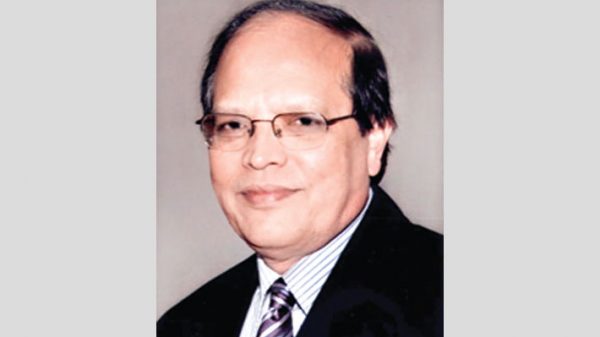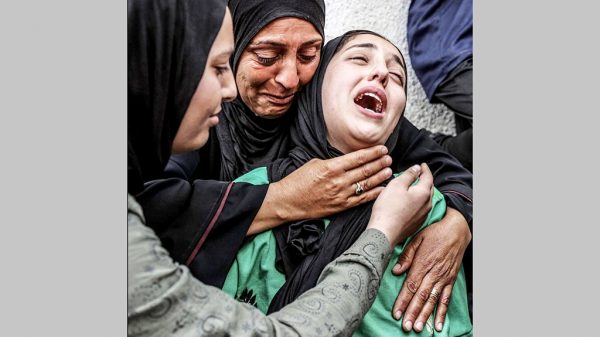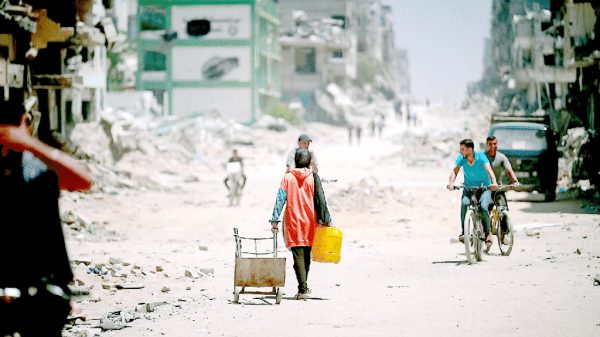Planned approach to economic freedom

As we have noted in the last piece, Bangabandhu was in favour of taking a balanced view on development. His planned approach to economic freedom was to balance long-term goals of equitable development with addressing the immediate existential needs of the people.
His approach to socialism was completely indigenous, preserving the positive elements of capitalism while nurturing socialist elements using his inherent intuition. He was at the end of the day a firm believer in social democracy. He believed in ‘learning by doing’ and applied that knowledge in laying the foundation of long-term inclusive development, despite the urgent challenge of rehabilitating the war-torn Bangladesh.
He was deeply involved in the process with a high hope of reaching the ‘end-state’ of ‘Sonar Bangla.’ His strength was the collective wisdom and fighting spirit of his people. He always encouraged the social mobilisation of the hard-working people of Bangladesh. The impoverished people of Bangladesh were ready to bear with him the challenges of the time.
This trust in his people originated from his life-long political struggle as well as learning from other nations that went through similar struggles. For example, he was deeply impressed by the collective action of the post-revolutionary Chinese people who were eager to bring changes in their society and economy.
He visited China just three years after the revolution. And he could see the euphoria for change all around New China. He wrote, “The truth is—here is a new country, new people and new modes of behaviour. It appears that there is newness in the air, everywhere!” (Sheikh Mujibur Rahman, ‘New China 1952’, Bangla Academy, 2021, p. 143). He was overwhelmed by the changes and prophetic about the future course of China.
He further wrote, “I was pleased to see the way New China is developing. If they continue to develop their country peacefully for ten more years none of its citizens will be in distress anymore; illiteracy and superstition too will be eradicated from it then. And they will be able to tackle any country of the world in every way. This is because New China has what it takes to build a nation—the collective will of its people.” (ibid. p. 160).
We can see the reflection of his trust in people’s collective participation in the nation-building when he said, “I am confident that our people will devote themselves to this task with as much courage and vigour as they demonstrated during the war of liberation.” (‘Foreword’ to the First Five Year Plan). His trust in people was echoed in the ‘Preface’ of the Plan by Professor Nurul Islam, the Deputy Chairman of the Planning Commission articulating the need for social transformation through necessary institutional changes. Professor Islam also noted, “Simultaneously, it will be necessary to build up an appropriate cadre of government functionaries, motivated workers and political leadership at the grass root level who will do the groundwork and prepare the country for further social changes in the next phase of our development effort.” In fact, the very first chapter of the Plan, titled ‘Social and Political Perspectives of Planned Development’, describes the four pillars of the constitution about which Bangabandhu was passionately engaged with throughout his struggle for independence of Bangladesh. In fact, he articulated these far-reaching objectives a couple of times on the very first day (i.e. 10th January, 1972) of his feet touching the ground of independent Bangladesh. And this rendering continued until these objectives were firmly rooted in the constitution. The chapter also details the pre-conditions for socialist development including elements like ‘The Need for Production and Austerity’ and ‘The Need for Cadres’. It also touches on the prevailing objective conditions and assumptions on which the Plan was anchored. People’s participation in the planning process was highlighted separately in alignment with Bangabandhu’s expectations, which he indicated in his book titled ‘New China 1952’ and various speeches preempting the objectives and goals of the Plan.
His desire for an exploitation-free society was not only articulated in the Plan, but also shared in many of his famous speeches both in the parliament and outside. He was very explicit about the danger of inequality and said that the people had to share whatever wealth was available in Bangladesh. He also said that he would not allow the rich to become richer and then poor poorer.
In addition to the objectives of the First Five-Year Plan which were discussed in the previous article, Chapter 2 of the Plan also elaborated on the size, strategy of the plan, consumption and production targets, and prices and wages. The size of development outlay for the five-year period was Tk 4455 crores which was 10-15% higher, in real terms, than 1965-1970 (FYP, 1973, p.13). Regarding the strategy of the Plan, it was stated that, “The plan is designed to generate a rate and pattern of income growth which will not only meet a minimum consumption standard but also expand employment opportunities and ensure a socially desirable pattern of income.” The Plan suggested reduction of unemployment by increasing output in labour-intensive sectors. Reduction of imported food grain and increase in import-substitution and export promotion to improve the balance of payments were also ‘major factors in determining the pattern of growth envisaged in the Plan’ (ibid. p. 14-15). The importance of agriculture, the largest sector, was emphasised throughout the plan. Even before Bangladesh had achieved independence, Bangabandhu sympathised with rural people whose livelihoods were involved with agriculture. During his pre-election speech on 28th October 1970, he had suggested the following ways to improve the situation of agriculture and peasants:
There was a need to revolutionise and bring desired change to the agricultural system, which had to be reformed in favour of the real peasants who tilled the land. There must be an upper ceiling of the ownership of the land. The surplus land beyond the proposed ceiling plus the government owned (khas) land must be distributed among landless peasants.
The agricultural system must be modernised. The farmers must be encouraged to form rural cooperatives to integrate their pieces of land without any delay. The government will have to take effective measures in this direction.
There was a proposal to abolish all taxes on land up to 25 bighas including outstanding amount to reduce the pressure of paying land revenue on the peasants.
There was a need for approaching scientifically to develop the natural resources. The country must introduce modern techniques in improving forest resources, crop cultivation, livestock, dairy farms, chicken/duck hatcheries and, of course, the fisheries. (DAH Khan, ‘Jatir Pita Bangabandhur Nirbachito Bhason’, Vol-1, Ekattor Prokashoni, 2018, p. 218)
These were not mere lip services to the people to win the election. After independence, he started on a path to implement these policy proposals. The first FYP tried to incorporate these policy changes. Chapter 3 of the FYP elaborated the structure of the plan which included sectoral allocations, phasing of the Plan, and non-monetised development outlay. The sectoral allocation showed that the highest investment was allocated in the agriculture and water sector (FYP, 1973, p.32). The FYP stated, “The main thrust of the Plan, however, is in the agricultural sector, in view of its overwhelming importance. The requirements of a high rate of growth in agriculture have been reflected in terms of interrelated investment in the rest of the economy” (ibid. p. 31). The Plan also mentioned that the public sector had to provide the initial capital for investment in agriculture. Along with allocation in Agriculture (24%) the FYP also discussed regarding allocation in Industries (19.7%), Transport and Communications sector (15.9%), Power and Natural resources sector (11.7%), Physical Planning and housing sector (10.1%), Education and Manpower (7.1%), Health and Social Welfare (4.7%), Family Planning (1.6%), Government (0.6%), Trade (3.8%), and Miscellaneous Services (0.6%) (ibid. p.32).
Chapter 4 of the First Five-Year Plan was titled ‘Domestic Resources for the Plan’ and elaborated on the sources of government revenue. The government would receive resources from taxes, Government domestic capital receipt, private savings, and long-term borrowing from banking system. Additional measures would be taken to fill in the gap (FYP, 1973, p.37). As already indicated, holdings that were 25 bighas and below were exempt from paying taxes and as a result the agricultural sector did not generate much revenue (ibid. p.42). On 27th September 1973, Sheikh Mujib delivered a speech in Bhairab where he mentioned that he kept his word and farmers were exempted from paying tax. But he asked the farmers to harvest crops for the people. He said he did not want his people to become beggars (DAH Khan, ‘Jatir Pita Bangabandhur Nirbachito Bhason’, Vol-4, Ekattor Prokashoni, 2018, p.37).
The Balance of Payments were discussed in Chapter 5 of the first FYP. This chapter consisted of import requirements, export promotion, institutions and policies, and foreign capital inflow. Capital goods, intermediate goods and food grains were important imports (FYP, 1973, p.52). The importance of import substitution was also emphasised (ibid. p.54). The major exports were expected to be raw jute, jute goods, tea, fish, leather, and leather products (ibid. p.58).
Chapter 6 was on Mobilisation of Labour for Development in alignment with Bangabandhu’s long-cherished goal of people’s participation in development. The chapter first identified the problems with mobilisation of labour and suggested possible solutions as well. The problems identified were inadequacy of complementary material and capital input, inability of people to pay for services, additional intake of consumption goods, unwillingness of families that were previously supporting unemployed or underemployed persons to share the burden of their consumption, distance between location of development projects and the participating persons’ houses, and lack of tools which the government had to provide to new workers (FYP, 1973, p. 67 and 68). The Plan also suggested that students would be able to work during their vacations. This would help adjust the resource gap that was mentioned earlier (ibid. p.68). Chapter 3 of the Qudrat-e-Khuda Education Commission Report also highlighted the need for students to get involved in development work in order to fill up the resource gap (ECR, 1974, p.10).
The final chapter of Part I of the first FYP was about the implementation of the plan. It dealt with the ‘administrative aspects in relation to the implementation of the plan’ (FYP, 1973, p.73).
Despite being a well-articulated plan document, it faced significant implementation challenges due to the tension between the technocrats who prepared the plan and the bureaucrats who could not come out of their old moulds. Moreover, there was the serious challenge of transitioning from a provincial statecraft to a national one, which affected the Plan’s implementation. Also, the impatient youths were opportunistically encouraged by the opposition politicians to engage in anti-state activities without giving a breathing space to Bangabandhu who was deeply involved in reconstructing the society and economy with meagre resources.
According to Professor Nurul Islam, when Bangabandhu had taken on the responsibility of Bangladesh it was a provincial state. Turning it into a nation state was not an easy task (Islam, Nurul, ‘Bangabandhu Sheikh Mujibur Rahman Kache Theke Dekha’, Prothoma Prokashon, 2020, p. 34). Even then, the economy was moving forward defying all these odds. But we all know how the planned development journey was derailed by conspirators in 1975, when they killed our father of the nation along with his dream project, ‘Sonar Bangla’.
The author is Bangabandhu Chair Professor, Dhaka University and former Governor, Bangladesh Bank. He can be reached at dratiur@gmail.com




























Leave a Reply